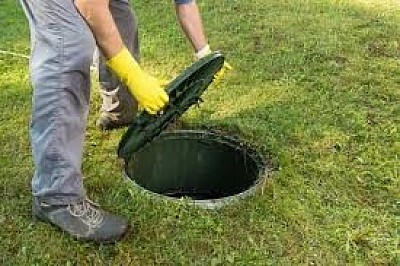These are important parts of the system that help it work properly.
Well And Septic Testing Ensure Safe Water Quality Today
Well and septic testing is essential for homes with private systems. Many people rely on these systems for water and waste management. Testing ensures that both systems function correctly. It also keeps your water clean and safe to use. Regular checks help prevent issues before they become big problems. This article will explain the importance of well and septic testing. We will also look at how the tests are done. Why Well Testing is Important Well water needs to be clean and safe. Unlike city water, well water does not go through a treatment plant. This means that any contaminants in the water go directly into your home. Testing your well water helps detect harmful substances. These can include bacteria, nitrates, and heavy metals. Regular testing can also show changes in water quality over time. This helps you take action before issues affect your health. It is recommended to test your well water at least once a year. If your well is new, it should be tested more often. Also, test after any repairs or changes to the system. If anyone in your home gets sick often, test the water. This will help find out if the well is the problem. Clean water is vital for drinking, cooking, and bathing. Testing helps ensure your family stays healthy. Why Septic Testing is Important Septic systems treat and dispose of wastewater from your home. If a septic system fails, it can cause serious problems. This includes contamination of your well water. It can also harm the environment and your property. Regular septic testing helps identify issues early. This makes repairs easier and less costly. Septic systems should be inspected every three to five years. This depends on how many people live in your home. Inspections involve checking the tank, pipes, and drain field. Professionals will look for leaks, blockages, and other issues. They will also check the sludge and scum levels in the tank. If these levels are too high, the tank needs pumping. Regular testing and maintenance keep your septic system working well. This protects your home and the environment. How Well Testing is Done Well testing involves collecting water samples from your well. A professional will take the samples and send them to a lab. The lab tests for various contaminants. Common tests include checking for bacteria, nitrates, and pH levels. Some tests look for heavy metals like lead and arsenic. The results show if your water is safe to use. Before testing, avoid using the well for a few hours. This helps get an accurate sample. The professional will explain the process and answer any questions. They may also suggest additional tests based on your location. For example, some areas have higher levels of certain contaminants. Regular testing helps you keep track of your water quality. This ensures your well is a safe source of water for your home. How Septic Testing is Done Septic testing starts with a visual inspection. A professional will look at the area around the tank and drain field. They will check for signs of leaks or damage. Next, they will open the tank to check the sludge and scum levels. If these levels are too high, the tank needs pumping. The professional will also check the pipes and baffles. These are important parts of the system that help it work properly. Some tests involve using cameras to look inside the pipes. This helps find blockages or other issues. The professional may also use dye tests. This involves adding dye to the system and checking where it goes. Dye tests help find leaks and other problems. Regular inspections and testing keep your septic system in good shape. This prevents costly repairs and keeps your home safe. Conclusion Well and septic testing is vital for homes with private systems. Regular testing ensures your water is clean and safe. It also helps keep your septic system working well. Testing can find problems early, making repairs easier and cheaper. If you rely on a well for water, test it at least once a year. If you have a septic system, inspect it every three to five years. These steps help protect your health, home, and the environment. Understanding the importance of well and septic testing can save you time and money in the long run.

